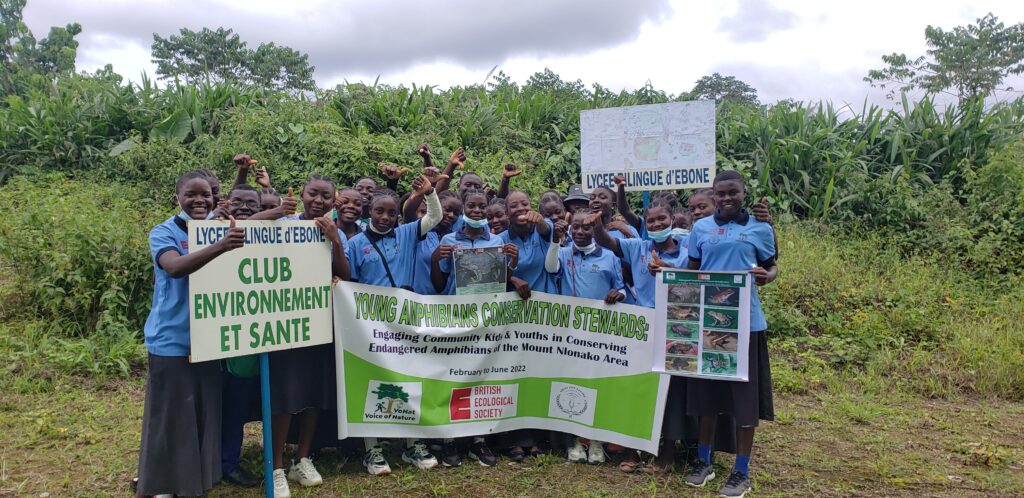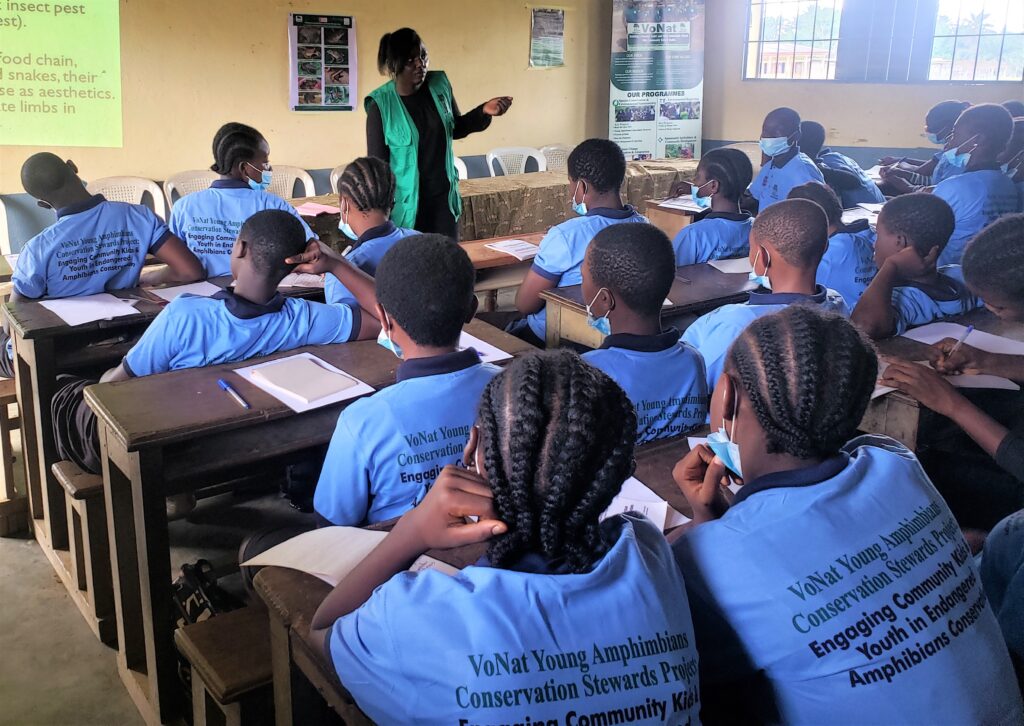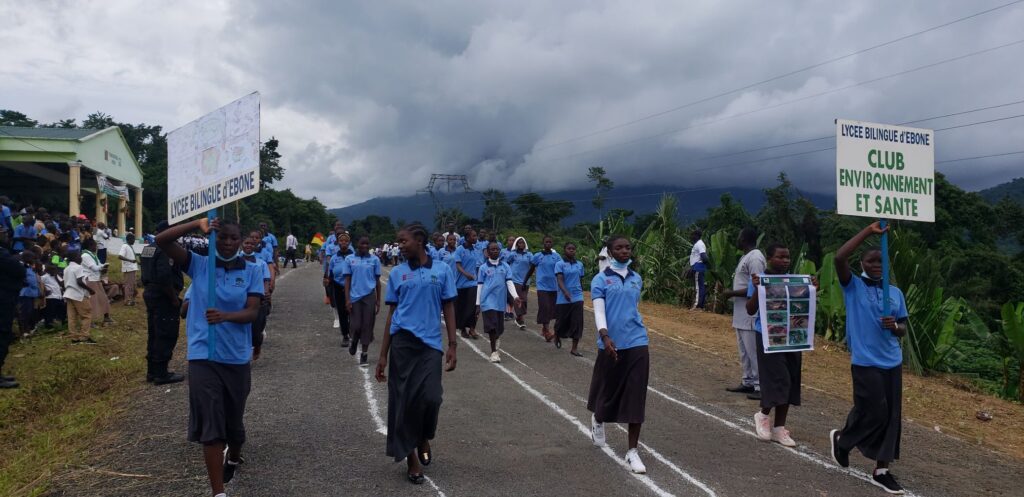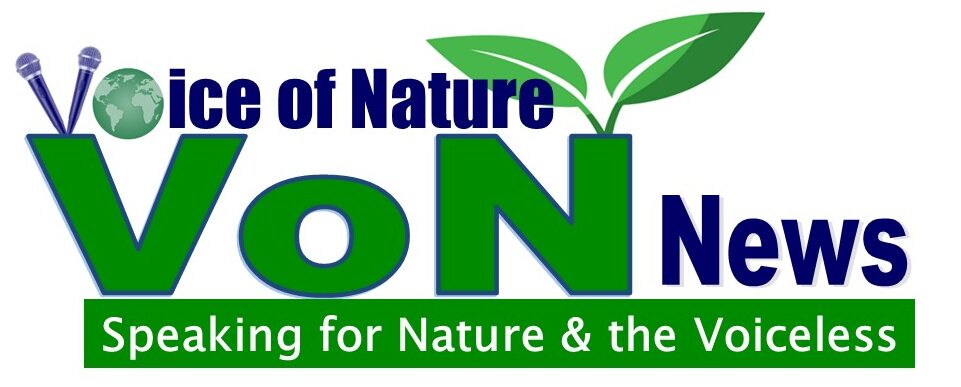More conservation and careful stewardship is needed to halt the depletion of some nine endangered amphibians species including the world’s largest frog species, the Goliath Frog (Conraua goliath) in the Mount Nlonako Area and to protect the ecosystems from further degradation.

Despite their invaluable role in stabilizing the ecosystem and fighting against diseases, these globally endangered amphibians most especially goliath Frog, risk extinction due to wanton hunting for food & pet trade, and habitat destruction. Report shows that up to 19,440 of goliath frog are harvested every peak season, and sold between FCFA 5000 ($10) and FCFA 30000 ($60). Community kids and young adults hold the key to reversing this narrative. They are the future hunters and trappers of these species and remain the only ones who can successfully talk their parents and friends out of the depletion of these species.
Amphibians Conservation Education

Cognizant of the threats amphibians in the Mount Nlonako Area are exposed to, the British Ecological Society and Voice for Nature Foundation partnered with Voice of Nature (VoNat) in February 2022 to raise 50 young amphibians conservation stewards in the Mount Nlonako Area. With the consent and involvement of some key community leaders, VoNat and partners took the youngsters from some seven communities in the Mount Nlonako Area through experiential learning sessions on the different amphibians species, their conservation importance, threats, and the role they can play to conserve the species.
Ecological Studies in Mangamba

The learning and amphibians conservation immersion sessions also took the kids and young adults, to some amphibians hotspots to understand the different feeding signs, tracks, vocalization and other signs of amphibians and the different threats they are faced with. This was accompanied by some traditional tales about the goliath frog and amphibians in the Mount Nlonako Area.
The experiential learning sessions boosted the appetites of youngsters, hitherto mostly glued to their TV and phones screens, in amphibians conservation. The kids pledged to be amphibians conservation stewards in their communities. “We learned a lot about the goliath frog and other amphibians species today. I will educate my friends and parents to stop killing these species and polluting their habitats,” Kwah Beltine, from Nkongnine village promised.
Nembo Evarestus from the Mangamba community, who has been involved in goliath frog hunting, said “we never knew there was anything wrong hunting goliath frogs until today. I will educate my friends about this and also caution them against polluting this river where the frogs are found”.
Actions Against Amphibians Depletion

On 20th May 2022, World Wildlife Day, which coincided with Cameroon’s National Day celebrations, the 50 new amphibians conservation stewards translated their zeal into concrete actions for endangered amphibians conservation. They marched past in front of over 1000 children, young adults and parents from communities within the Mount Nlonako area with posters of some endangered amphibians species they want protected. They also brandished drawings and presented poems, songs, articles and debates with unique conservation messages.
Radio Sensitization

This culminated in a special sensitization programme on the Nlonako FM radio station using pro-amphibians conservation poems, songs, articles and debates. Habitat pollution and destruction, trapping and hunting, and other activities that further jeopardise the existence of endangered amphibians, especially the world’s largest frog, goliath frog, are some of the poor environmental practices the young amphibians stewards advocate strongly that their communities stop.
The conservation messages have been well received by community members and their local leaders. “Conserving the frogs is a good initiative. The destruction of one species has a huge impact on the ecosystem. It is thus, necessary for everyone to be involved in endangered frogs conservation,” the traditional ruler of Mangamba, Chief Roland Essengue Mbonda, said.
An elite and resident of the Mount Nlonako Area, Mr. Nkede Henry, is particularly impressed with the strategy of educating children and engaging them in conservation efforts. “Involving kids in the conservation of amphibians is a unique way to fight against the extinction of these species. They will take the conservation message to their parents who are hunters. I think there is hope,” he added.
With more and more amphibians conservation consciousness being generated within communities in the Mount Nlonako area, there is an urgent need to assess and provide alternative sustainability schemes to hunters of goliath frog and farmers destroying amphibians habitat. This will serve as a practical mechanism to convert the attention of community members from the destruction of endangered amphibians species and their habitats.
By Ndimuh B. Shancho







